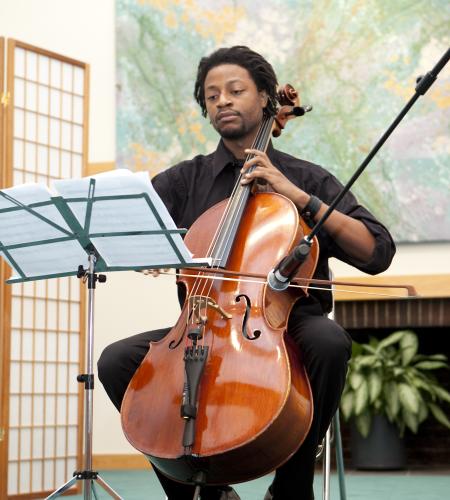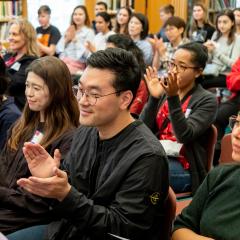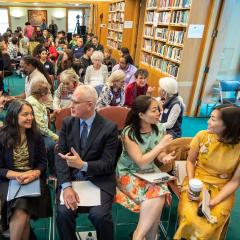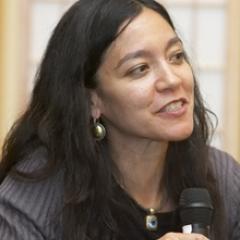Jane Hirschfield notes that, to fully appreciate poetry, one must travel inward as well as outward in imaging. She writes “provoking the imagination, on the inward journey, is at the heart of change.” (7) Levertov notes that both the meditative and the socially active are interrelated. Similarly, making peace is a process of both inward discernment and outward action.
Poets must give us their (and ours to claim) imagination, the images of peace, to replace those of disaster and war, in order to foster hope for a better world. The Japanese Buddhist philosopher and peace educator Daisaku Ikeda writes that the poet creates “portals of hope and entranceways for exchange in the massive walls that divide us.” (8) Good peace pedagogy must do the same, with the power to evoke our imagination toward the deepest possibilities for human existence. All too often we can despair at the hope for change if we see only our present world and the structural violence in which we are embedded.
Elise Boulding began in the 1980s, with Warren Ziegler, to create imaging workshops in which participants, through a series of imaginary steps both backwards and forwards in their own personal sense of time, communally designed the world they wished to see and, at the end of the workshop each participant created action steps to move into the world he/she wished to see. Boulding’s ideas were based, in part, on the work of the Dutch futurist, Fred Polak, who believed that educators and activists cannot work for a world they cannot imagine. So it is with the artists, who, by their trade, are closer than many of us to the imaginings of both inner truths and outer good. It is important to give credence to where we have been as much as where we hope to go. Good poetry captures the essence of this hope and, in Ikeda’s words, creates a sense of “spiritual openness” to new possibilities. Thus we can see that both poets and peace educators can contribute to the deepening of this spiritual essence within each of us so that we can create possibilities for new ways of thinking and acting.
Levertov takes this concept further by telling us, in “Making Peace,” that we must go beyond even static imagining and that, in the writing and speaking of the very words themselves, poems and the poet, and, in turn, we the readers and listeners, become the makers of peace.
A Voice from the dark called out,
“The poets much give us
Imagination of peace, to oust the intense, familiar
‘imagination of disaster’. Peace, not only
The absence of war”
But peace, like a poem
is not there ahead of itself,
can’t be imagined before it is made,
can’t be known except
in the words of its making,
grammar of justice
syntax of mutual aid.
If we believe that poetry can touch the heart of the human condition, can engage the listener, writer, reader in dialogue, can help us with the spiritual transformation and vital imaging necessary, we conclude that poetry is a form of peace pedagogy. Indeed, we might consider it is one of the highest forms of peace pedagogy if we believe, as does Hirschfield, that great poetry is “a bird of prey, tearing open whatever needs to be opened.” (9)
Despite the claim of some poets, such as Levertov, that language is the most potent vehicle for change, I conclude that language is not enough for both the “tearing open” and the potential for transformation. It is not just in the hearing of the words, the reading or writing of the words, but in that space between the words and the “unwords,” between the language and the unlanguage, as we hear a poem, or write a poem or read a poem, it is in that space during which the reflective processes of moving inward and outward occur, as we both hear the words and “still the words,” that the transformative educational process begins. Here, also, is the heart of educating for peace.
Notes
1. Denise Levertov, The Poet in the World (New York: New Directions Books, 1973), 53.
2. Ibid., 111.
3. Levertov, The Poet in the World.
4. Louis Untermeyer, A Concise History of Great Poems (New York: Simon and Schuster, 1953).
5. Ibid., 13.
6. Ibid.
7. Ayers, Teaching Toward Freedom: Moral Commitment and Ethical Action in the Classroom, 106.
8. Daisaku Ikeda, “On the Occasion of the Publication of Creating Waldens: Report on the Occasion of Publication,” (Ikeda Center, Cambridge, MA, September, 2009).
9. Ayers, Teaching Toward Freedom: Moral Commitment and Ethical Action in the Classroom, ix.



